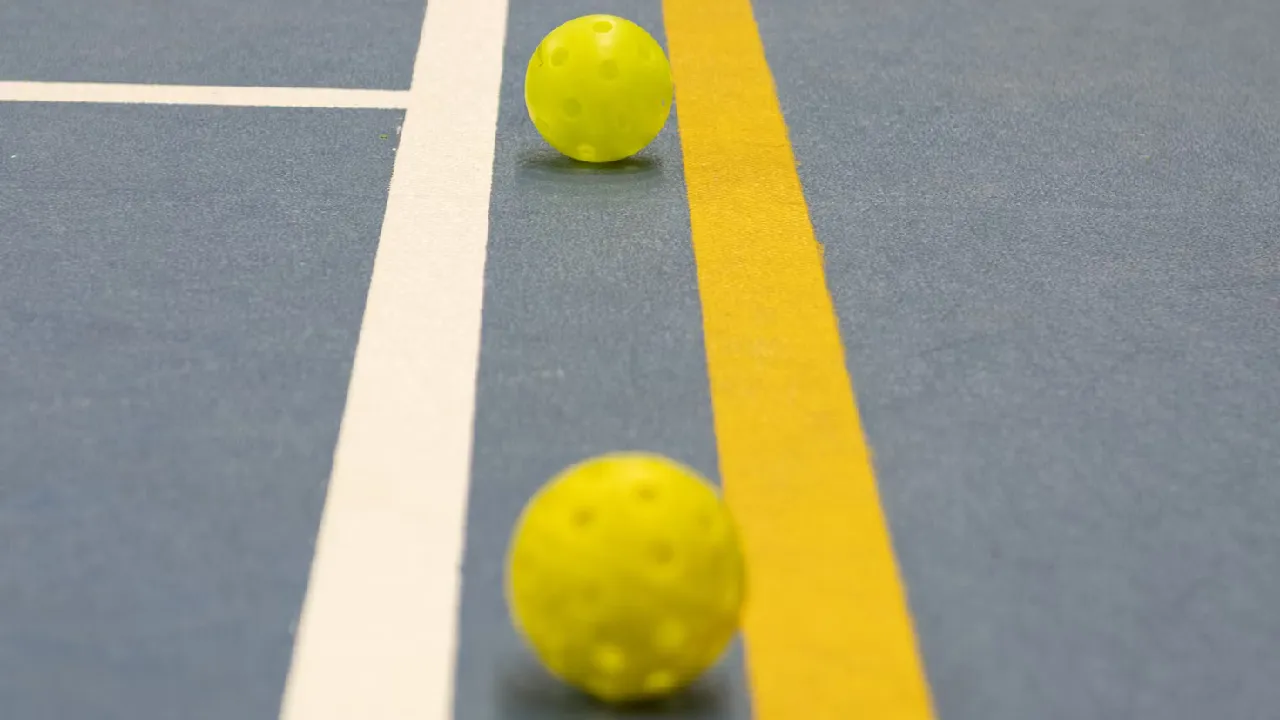How to Set Up a Portable Pickleball Court in 20 Minutes
- If you're a pickleball enthusiast who's always on the move or simply short of space, a DIY portable pickleball court could be the ultimate game-changer. Whether you're at a local park, driveway, or gymnasium, being able to set up a fully functional court in under 20 minutes means more play, less prep. In this in-depth guide, we'll break down everything you need to know: from selecting the best portable pickleball net, laying out accurate pickleball boundary lines portable options, to choosing from top-rated portable pickleball court kits.
What Makes a Pickleball Court "Portable"?
A portable pickleball court is essentially a temporary setup that mimics a regulation court (20 feet wide by 44 feet long) without requiring a permanent surface or in-ground net posts. Instead, you use:
- A portable net system
- Temporary or removable boundary lines
- A flat surface (asphalt, gym flooring, tennis court, or even grass)
- Optional court kits with pre-measured lines and accessories
These courts are ideal for:
- Casual games
- Pop-up tournaments
- PE classes or community rec events
- RV and travel enthusiasts
Step-by-Step Guide: Set Up in 20 Minutes or Less
Step 1: Choose the Right Location (2-3 minutes)
First, scout a flat and clean playing surface. Ideal locations include:
- Tennis courts (just tape your own lines over it)
- Driveways
- Parking lots
- Gym floors
- Turf or sports mats
Pro Tip: Make sure you have enough clearance around the court—at least 5 feet beyond each baseline and 3 feet on the sides.
Step 2: Measure and Mark the Court Area (5-6 minutes)
You can use:
- Measuring tape (at least 50 ft long)
- Chalk, painter’s tape, or portable court lines (like roll-out tape or rubber markers)
Pickleball Court Dimensions:
- 20 ft wide x 44 ft long (includes both halves)
- Non-volley zone ("Kitchen"): 7 ft from the net on both sides
Marking Tips:
- Start by laying out the full rectangle.
- Then mark the centerline (dividing left and right service areas)
- Outline the Kitchen lines next
Want to save even more time? Use pickleball boundary lines portable kits that are pre-cut to regulation specs and include corner guides.
Step 3: Assemble the Portable Pickleball Net (5-7 minutes)
Not all portable nets are created equal. Look for features such as:
- Regulation height: 36 inch at posts, 34 inch in center
- Sturdy metal frame (powder-coated steel or aluminum)
- Center support rod to prevent sagging
- Weather-resistant netting
- Carrying case
Popular Options:
- PortaCourt's Premium Pickleball Court
- OnCourt OffCourt PickleNet Deluxe
- ZENY Portable Pickleball Net System
For more recommendations, check out 10 Best Portable Pickleball Courts for Your Backyard in 2025!
Assembly Instructions (General):
- Lay out the frame pieces.
- Snap or slide them together (many are color-coded).
- Attach the net to the end posts.
- Tighten and adjust center support.
Most systems can be fully assembled in under 7 minutes with practice.
Optional but Helpful: Portable Pickleball Court Kits
A full portable pickleball court kit typically includes:
- Pre-cut boundary lines (often rubber or plastic)
- Regulation net system
- Court markers (for service areas, NVZ)
- Carrying case
- Sometimes even paddles and balls
Why They’re Worth It:
- Speeds up the setup process
- Ensures dimension accuracy
- Ideal for group events, community centers, or rotating play
Some brands to consider:
- Pickle-Ball Inc. Court-In-A-Bag
- PortaCourts Portable Pickleball Courts
- Onix Portable Court System
- Boulder Sports Pickleball Bundle
Surface-Specific Setup Tips
On Concrete or Asphalt
- Use painter’s tape or chalk for boundary lines.
- Consider using rubber weights or sandbags to secure the net in wind.
On Gym Floors
- Opt for removable vinyl lines or rubber edge markers.
- Ensure the net base is padded to avoid scratching the surface.
On Grass or Turf
- Use roll-out court lines or tent pegs to keep markers in place.
- Net bases may require stabilization for uneven surfaces.
Maintenance & Storage Tips
Always wipe down the net poles after outdoor use to prevent rust.
Store everything in a dry bag or plastic container.
Check tape residue or marks after removal to avoid surface damage.
Use a labeled court layout diagram to remember setup orientation.
Advanced Tips for Pro and Coaches
If you're a coach or a traveling tournament host, you can scale up your setup with:
-Multi-court boundary line systems (for 2 to 4 courts)
-Wheeled carts for transporting nets and kits
-Custom banners or backdrops for branding
-LED court lights for evening play
Also consider investing in a portable scoreboard or app-based scoring system.
Common Mistakes to Avoid
Using duct tape: It leaves residue and can damage surfaces.
Forgetting centerline or kitchen line: Essential for legal play.
Buying a cheap net that sags and warps easily.
Skipping measurements and "eyeballing" court lines: Accuracy matters!
Final Thoughts: Play Anywhere, Anytime
Creating a DIY portable pickleball court doesn’t require special tools or hours of setup. With a bit of practice, you can lay down your court, assemble a portable pickleball net, align your pickleball boundary lines portable, and be playing in less than 20 minutes.
For those looking for a ready-to-roll solution, portable pickleball court kits are your best friend. They simplify everything and make spontaneous games with friends, coaching sessions, or tournaments a breeze.
FAQ: Everything You Need to Know
Q: What is a portable pickleball court?
A portable pickleball court is a temporary, regulation-sized (20 × 44 ft) setup that uses a freestanding net system and removable boundary lines—no permanent posts or surface prep required.
Q: Can I use a tennis court to play pickleball?
A: Absolutely! Just tape over the existing lines. Many portable kits even include conversion guides for tennis courts.
Q: How long does a DIY portable pickleball court last?
A: If maintained properly, nets and line markers can last 2-5 years or longer.
Q: Are portable courts allowed in official tournaments?
A: If your net height (36″ posts, 34″ center) and boundary layout meet USAPA specifications, portable courts are approved for official play.
Q: How quickly can I set up a portable pickleball court?
A: With practice, you can choose your location, mark lines, and assemble the net in under 20 minutes, making it perfect for spontaneous games.
Q: Do I need a full court kit or can I mark lines myself?
A: DIY marking with chalk or tape works, but portable court kits (e.g., Pickle-Ball Inc. Court-In-A-Bag) save time, ensure regulation accuracy, and include corner guides.
Q: How do I maintain and store my portable court?
A: After each use, clean net poles, check for tape residue, and store all components (net, lines, carry case) in a dry, labeled container.
Q: Can coaches or clubs use portable courts for multi-court events?
A: Yes—invest in multi-court boundary systems, wheeled equipment carts, and branded backdrops to scale up for clinics, tournaments, or PE classes.
COMMENTS
Sort by :





Leave A Comment